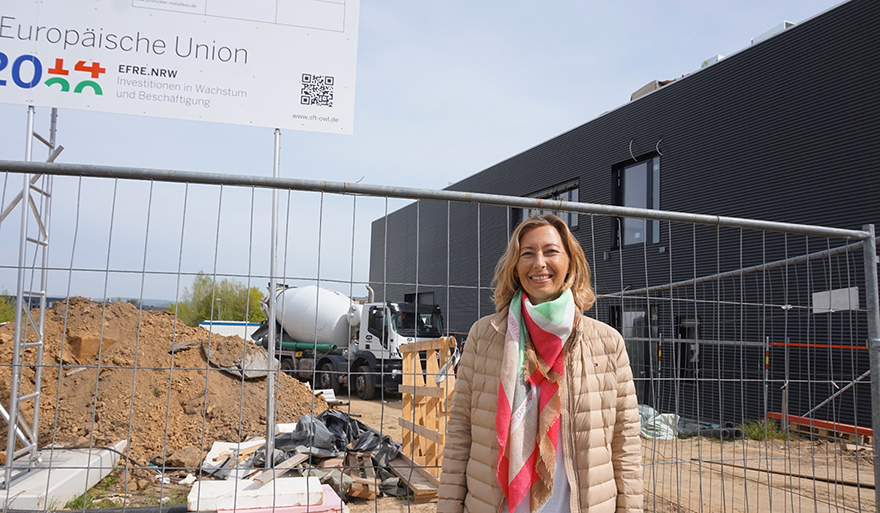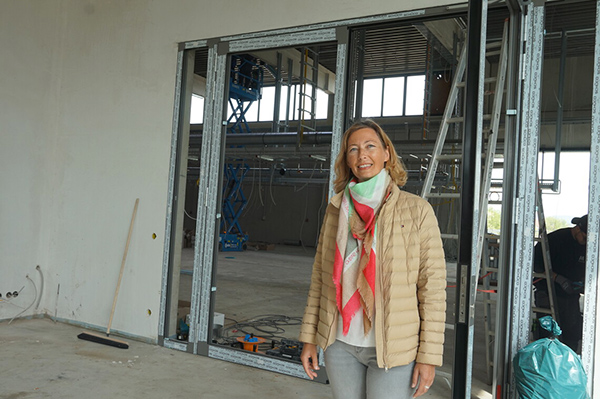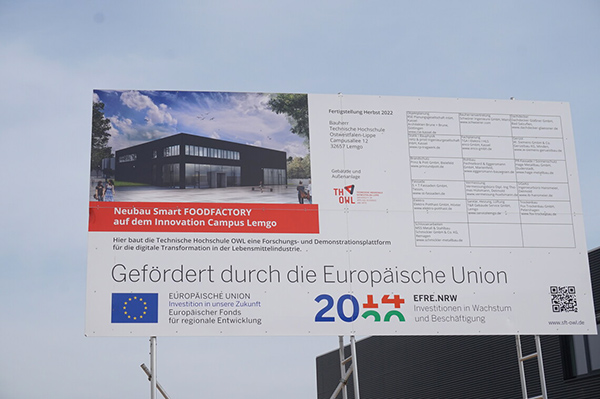"Where food meets IT" – smart food technology comes to Lemgo
In Germany, the Smart Food Factory, financed by a European fund, will aim to improve the management of available food, in particular by scrutinizing foods and their production methods.

Lemgo (Germany)
We live in a world that can be quite contradictory. In large parts of our planet hunger is still an issue. In other regions, people live in abundance. Worldwide, about one third of all food is thrown away before it even reaches the consumer. Even here in the EU, large quantities of valuable food are simply tossed away.
This unequal distribution of food is now getting even worse. Russia and Ukraine are among the largest wheat exporters in the world. Poor countries, especially in North Africa, depend on this cereal as a staple food, and they import a large part of it from Russia and Ukraine. The war is now preventing exports and production, threatening many countries with food shortages.
In reality, there is enough food to feed all the world’s people. But mismanagement of the available resources and inefficient production processes make its distribution inequitable.
Analyze food products
To improve the situation, research projects are needed so as to make food production smarter. This is exactly what is planned in Lemgo, a small university town in Germany's North-Rhine Westphalia region. Under the auspices of the Ostwestfalen-Lippe University of Applied Sciences (TH OWL), a Smart Food Factory is being built on the university campus in Lemgo. Under the motto "Where food meets IT", research will be carried out here from this autumn. The building is still under construction, but it will be completed as early as summer.
The project was funded with €10 million from the European Regional Development Fund (ERDF). The funding covers the construction of the new lab building, the equipment and some experimental facilities for the first projects.
The factory is not intended to produce food in large volumes, but rather to study it using demonstrations and test equipment. It will be an industrial plant on a small scale. The Smart Food Factory will compete for projects depending on the research needs. The results should primarily generate scientific understanding in the field of food technology. However, the research will be of practical interest for food-producing businesses, which will be invited to participate. They will have the opportunity to have their own products tested and benchmarked.
Transparent and accessible research
"Together with our project partners, we will put food and its production under the microscope. Sustainability, quality, food safety, security of supply and economic viability are particularly central to the research interest", explains Dr Andrea Davis, the initiative’s project manager. She leads us enthusiastically around the construction site and knows every corner inside out.

We begin in the foyer. It will be a bright, glass entrance area that already looks very open in its unfinished state. "It is particularly important for us to make the research projects transparent and accessible to the public," says Davis. In the future, workshops, lectures, information events and co-working spaces are planned here.
"When consumers hear about smart food production, they are often sceptical. Smart food? Who would want their milk carton to talk to them? We want to show that smart food production is indispensable for the future. We can only do that if we invite people in," Davis says. The entire building is covered with large grassy areas. The large workshop, where the research will later take place, can also be seen from the outside. Everyone can take a look inside.
Focus on shelf life
In the workshop, Dr Davis gets specific. "Today, in food production, you usually throw raw materials into a machine at the front and at the end you get a product. We want to change that. We want to monitor and understand food production processes from the first step to the last." This is to be done primarily by sensors that record the condition of raw materials and processed food at all times. The reason: raw materials are natural products and are different in every production batch.
If there are deviations, this can be so important for the product quality that entire batches have to be disposed of. Production processes therefore need to be adjustable during operation. Only in this way can companies become more resource-efficient. In a nutshell, Davis says, you get a digital image of a production process, understand the product better and can work with it on a completely different, smarter, level.
For example, the temperature or the accumulation of certain enzymes in the food can be monitored. Sensors that detect gases can be used to record the spoilage process of a food product. This can yield conclusions about the shelf life of a food. "Shelf life will be a very important part of our research. If less food is to be thrown away in the future, we will have to deal differently with best-before dates. And if we can make food more long-lasting, it will also be easier to transport. Better transport options also enable us to improve the security of supply for people on other continents, because they are easier to supply. You see, many things are connected."
Vegetable milk, meat substitutes
Amid heavy construction machinery and a bustle of workers, Ms Davis tells us about the research projects that will soon be coming to Lemgo. For example, there is the continuous brewing system. From the initial mashing to the storage tank, every step in the production of beer is to be monitored digitally. It is an intriguing prospect for brewmasters and their craft.

Societal trends will also be taken into account in the Smart Food Factory. "We will be particularly interested in the efficient production of dairy and meat substitutes and improving them," explains Andrea Davis. There is already research on this at TH OWL, she says, which is looking at plant-milk production from oats, soya and peas.
"In plant-milk production, we are asking ourselves the big question of how we can produce proteins efficiently and in a plant-based way. This can be done, for example, via the leaves of the sugar beet. We want to find out more." Davis says this also applies to meat substitutes, as demand for these is also growing enormously.
Real meat products are also being studied in the Smart Food Factory. "We have a tiled room where you could cut up a whole pig, just like in an abattoir", Dr Davis tells us with a smile. Another research project is looking at the maturation of air-dried sausages. "We will be able to use ultrasound waves to determine how ripe a piece of ham is. It is a valuable product that has to be perfect when it is delivered. Here, too, it is a question of resource efficiency. A fancy hotel will easily throw away such meat products that are not flawless".
Lemgo will soon be an important scientific hub in the field of smart food production. Such technology will be indispensable if we are to feed the world in a sustainable and resource-efficient way. That is all the more true at a time when food is scarce and expensive worldwide.
 This article was produced as part of the Union Is Strength competition, organised by Slate.fr with the financial support of the European Union. The article reflects the views of the author and the European Commission cannot be held responsible for its content or use.
This article was produced as part of the Union Is Strength competition, organised by Slate.fr with the financial support of the European Union. The article reflects the views of the author and the European Commission cannot be held responsible for its content or use.